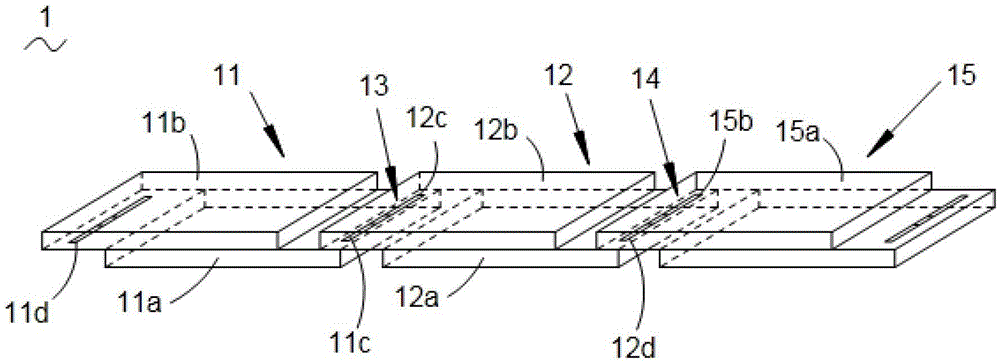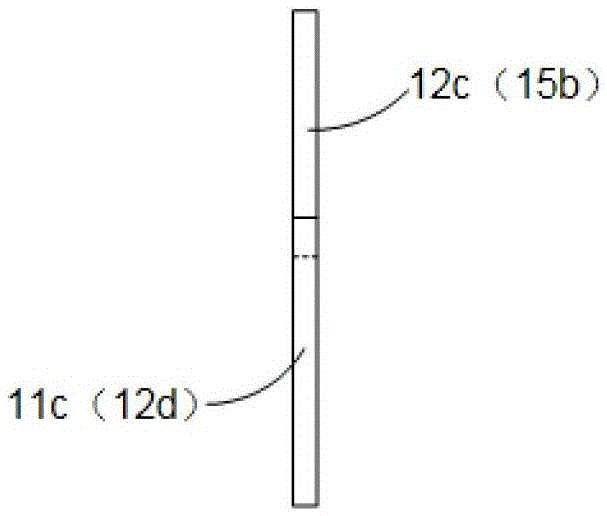A dye-sensitized solar cell
A solar cell and dye-sensitized technology, applied in the field of solar energy, can solve the problems of increasing panel resistance, enhancing electronic recombination, and limited output voltage of a single-chip dye-sensitized solar cell, so as to prolong battery life, increase diffusion path, The effect of reducing the chance of being corroded
- Summary
- Abstract
- Description
- Claims
- Application Information
AI Technical Summary
Problems solved by technology
Method used
Image
Examples
Embodiment Construction
[0020] In order to illustrate the technical content, structural features, achieved goals and effects of the present invention in detail, the following will be described in detail in conjunction with the embodiments and accompanying drawings.
[0021] see figure 1 , Figure 2(a) ~ Figure 2(b), figure 1 Shown is a schematic diagram of the three-dimensional structure of the dye-sensitized solar cell of the present invention. Fig. 2(a) is a top view structure schematic diagram of the series circuit of the photoelectric conversion units of the dye-sensitized solar cell of the present invention. FIG. 2( b ) is a side-view structural diagram of the series circuit of photoelectric conversion units of the dye-sensitized solar cell of the present invention. The dye-sensitized solar cell 1 includes: at least a first photoelectric conversion unit 11 and a second photoelectric conversion unit 12, and the first photoelectric conversion unit 11 further includes a first photoanode 11a and a ...
PUM
 Login to View More
Login to View More Abstract
Description
Claims
Application Information
 Login to View More
Login to View More - R&D
- Intellectual Property
- Life Sciences
- Materials
- Tech Scout
- Unparalleled Data Quality
- Higher Quality Content
- 60% Fewer Hallucinations
Browse by: Latest US Patents, China's latest patents, Technical Efficacy Thesaurus, Application Domain, Technology Topic, Popular Technical Reports.
© 2025 PatSnap. All rights reserved.Legal|Privacy policy|Modern Slavery Act Transparency Statement|Sitemap|About US| Contact US: help@patsnap.com



